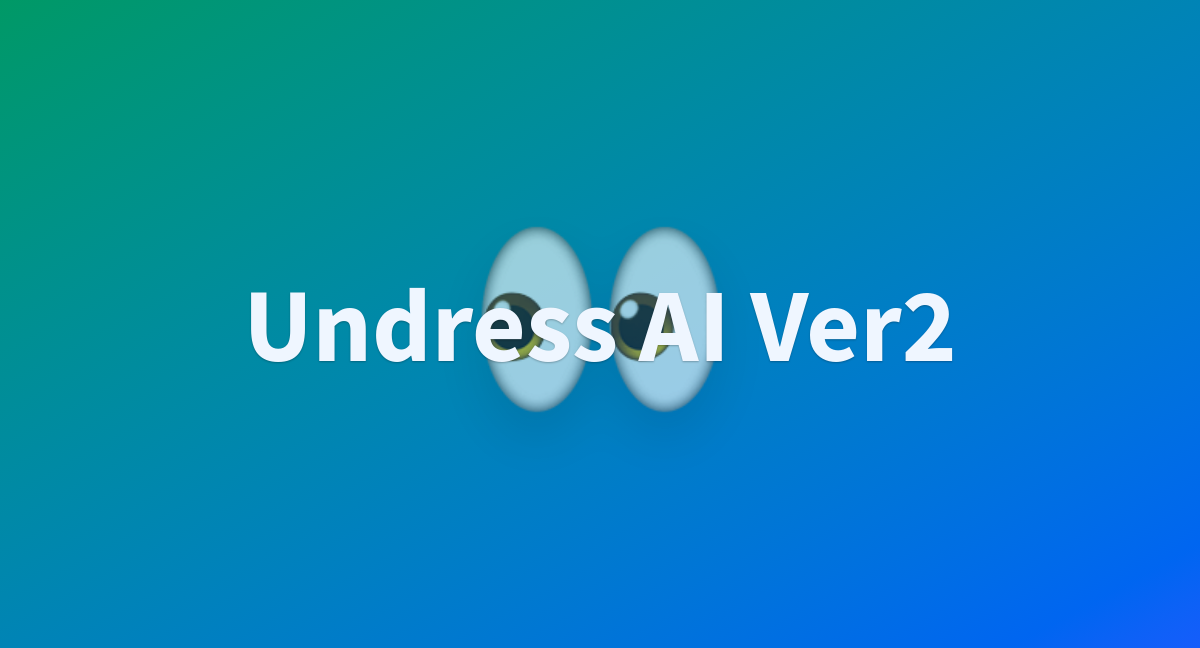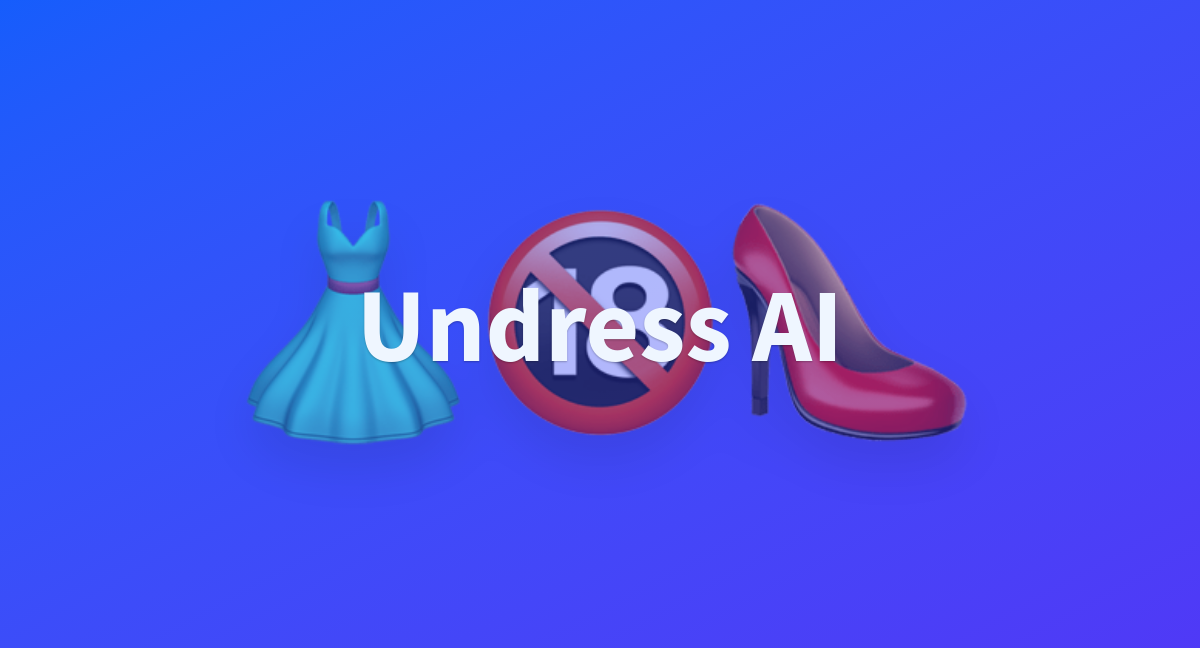Free Undress IA: A Comprehensive Guide To Understanding And Utilizing This Revolutionary Technology
Free undress IA has become a buzzword in the tech world, representing a groundbreaking approach to privacy, digital rights, and artificial intelligence. As technology continues to evolve, this innovative concept is reshaping how we interact with digital content and personal data. In this article, we will explore the significance of free undress IA, its applications, and the ethical considerations surrounding its use.
Understanding free undress IA requires a deep dive into the intersection of artificial intelligence, privacy, and ethical responsibility. This technology has sparked debates worldwide, with proponents highlighting its potential benefits and critics raising concerns about misuse. As we delve deeper, you will gain insights into its mechanisms, implications, and the importance of responsible implementation.
This article aims to provide a comprehensive overview of free undress IA, ensuring you are well-informed about its applications and the ethical considerations involved. Whether you are a tech enthusiast, a developer, or simply curious about the future of digital privacy, this guide will equip you with the knowledge to make informed decisions.
Read also:Understanding Hdhud 4uin A Comprehensive Guide To Its Features Benefits And Applications
Table of Contents
- What is Free Undress IA?
- History and Evolution
- How Does It Work?
- Applications and Uses
- Ethical Considerations
- Legal Implications
- Benefits of Free Undress IA
- Challenges and Risks
- Future Potential
- Conclusion
What is Free Undress IA?
Free undress IA refers to the use of artificial intelligence algorithms to digitally remove clothing from images or videos. This technology leverages advanced machine learning techniques to analyze visual data and generate realistic outputs. While the term "free" implies accessibility, the ethical and legal implications of its use are significant.
At its core, free undress IA is part of a broader category of AI-driven tools designed to manipulate digital content. Its development has been driven by advancements in computer vision and deep learning, enabling machines to interpret and recreate visual elements with remarkable accuracy.
Key Features of Free Undress IA
- Utilizes neural networks for image processing
- Capable of generating realistic outputs
- Dependent on large datasets for training
- Raises ethical and privacy concerns
History and Evolution
The concept of free undress IA has evolved significantly over the past decade. Initially developed as a research tool for computer vision, its applications have expanded into commercial and recreational domains. Early versions of the technology were limited in scope and required extensive computational resources, but advancements in hardware and software have made it more accessible.
As AI technology continues to improve, free undress IA has become a focal point for discussions about digital ethics and privacy. Its evolution reflects broader trends in the tech industry, where innovation often outpaces regulation.
How Does It Work?
Free undress IA operates by analyzing pixel data in images or videos and applying algorithms to reconstruct the visual elements. This process involves several stages:
- Image analysis: The system identifies key features in the input data.
- Data processing: Neural networks process the information to generate a new output.
- Output generation: The final image or video is created, often with high levels of realism.
Underlying this process is the use of convolutional neural networks (CNNs), which excel at image recognition and manipulation tasks.
Read also:Who Is Jay Ma The International Student Taking Instagram By Storm
Applications and Uses
Free undress IA has a variety of applications across different industries. While some uses are beneficial, others raise ethical concerns:
- Entertainment: Used in film and video production for special effects.
- Forensics: Assists law enforcement in analyzing digital evidence.
- Privacy concerns: Misused for creating non-consensual content.
Its versatility makes it a powerful tool, but also highlights the need for responsible usage.
Industries Benefiting from Free Undress IA
- Film and entertainment
- Medical imaging
- Research and development
Ethical Considerations
The ethical implications of free undress IA are profound. Its potential for misuse in creating non-consensual content has sparked widespread concern. Privacy advocates argue that the technology violates individual rights and undermines trust in digital platforms.
Developers and policymakers must address these concerns by establishing clear guidelines for its use. Transparency and accountability are crucial in ensuring that free undress IA is deployed responsibly.
Key Ethical Challenges
- Consent and privacy
- Potential for abuse
- Impact on mental health
Legal Implications
From a legal perspective, free undress IA presents unique challenges. Laws governing digital content and privacy vary by jurisdiction, making it difficult to establish universal standards. However, many countries have introduced legislation to combat the misuse of AI technologies.
In the United States, for example, several states have enacted laws specifically targeting the creation and distribution of non-consensual content. These laws emphasize the importance of obtaining explicit consent before using such technologies.
Global Legal Frameworks
- Data protection laws (e.g., GDPR)
- Cybercrime legislation
- Intellectual property regulations
Benefits of Free Undress IA
Despite the controversies, free undress IA offers several benefits when used responsibly:
- Enhances creative possibilities in media production.
- Supports advancements in medical imaging and diagnostics.
- Contributes to research in computer vision and AI.
By focusing on ethical applications, developers can maximize the positive impact of this technology.
Challenges and Risks
While free undress IA holds great promise, it also poses significant risks. The potential for misuse, coupled with the rapid pace of technological advancement, necessitates a proactive approach to addressing these challenges.
Key risks include:
- Non-consensual content creation
- Violation of privacy rights
- Reputational damage to individuals
Addressing these risks requires collaboration between developers, policymakers, and stakeholders.
Future Potential
The future of free undress IA is shaped by ongoing advancements in AI and machine learning. As technology continues to evolve, its applications will expand, offering new opportunities for innovation and growth. However, ensuring ethical and responsible use will remain a priority.
Researchers and developers are exploring ways to enhance transparency and accountability in AI systems, which will play a crucial role in shaping the future of free undress IA.
Conclusion
Free undress IA represents a significant advancement in the field of artificial intelligence, with far-reaching implications for privacy, ethics, and digital rights. While its potential applications are vast, responsible usage is essential to mitigate risks and ensure positive outcomes.
We invite you to engage in the conversation by leaving comments or sharing this article. Your feedback is valuable in shaping the future of AI technologies. Additionally, explore other articles on our site to deepen your understanding of emerging trends in technology.
Article Recommendations


